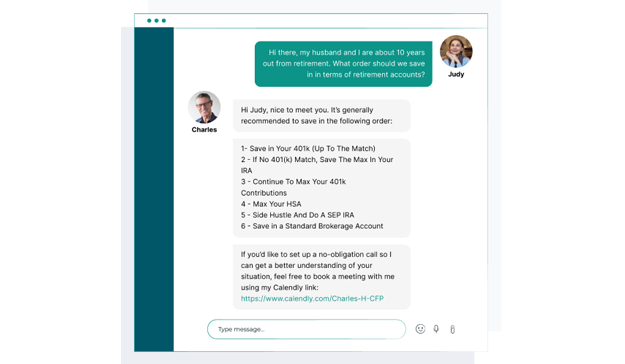An asset is a resource that a company owns that provides economic value. This includes cash, equipment, property, rights, or anything that a company can expect to generate revenue or reduce expenses. Based on their characteristics, assets can be classified into different types. For example, they can be classified into growth assets or defensive assets depending on their investment potential. They can be tangible if they have physical attributes, or intangible if they do not. The main asset categories are current assets and fixed assets. Current assets are assets that can be liquidated in less than a year and can be used for short-term expenses. Examples of current assets are cash and stocks. Fixed assets or long-term assets are assets that cannot be liquidated easily and appreciated with time. Examples of fixed assets are property and equipment. The process to determine the valuation for each of these asset types varies. Assets are classified by different characteristics they have. Some of those characteristics include an asset’s: While all assets provide returns, the way they do so depends on their characteristics. For example, stocks provide returns in a shorter period of time as compared to property. The most important characteristic of any type of asset is “liquidity,” or its ability to be quickly converted into another type of asset or cash. Based on this quality, assets can be of two types. Current assets are assets that have a ready market for exchange and liquidation. They can be used for daily expenses in the case of an individual and operational expenses for a business. For example, you can generate profits (or losses) through the purchase and sale of stock in less than a week. Similarly, you can also withdraw funds from your investment accounts without any significant delays. The economic value provided by current assets is used to pay current liabilities. For example, cash can be used to pay dividends. Fixed assets are assets that are difficult to liquidate in the short-term. But they appreciate in value and provide significant profits in the long term. For example, it takes time, sometimes as many as several years, to sell a property. But a profitable transaction can generate much more by way of returns than one involving a short-term asset. The economic value provided by long-term assets is typically used to pay long-term liabilities. Other parameters are also used to define different types of assets. For example, the utility of an asset is often used to define its type. A property cannot be used in the same manner as stocks. Their time horizons and markets are different and, therefore, a business and individual might use them for different purposes in their portfolio. Another basis for the classification of assets is the presence (or absence) of physical attributes. Certain assets, like land or equipment, have physical attributes; others, like intellectual property and cryptocurrencies, do not. A separate category of assets is classified based on their investment potential. They are known as investment assets and, depending on whether they are used to multiply profits or generate consistent income, can be categorized as growth assets or defensive assets. Given below is a classification of some of the most common asset types. Tangible assets have a fixed physical presence and are valued based on their physical attributes. For example, property in a prime neighborhood will be more expensive as compared to property in one that is situated in a depressed area. Similarly, used equipment is less costly as compared to a new one. Intangible assets do not have physical attributes. For example, cryptocurrencies are code and do not have a physical manifestation unlike hard cash. As compared to tangible assets, it is more difficult to determine the valuation and worth of an intangible asset. Operating assets are assets that are necessary for business operations and can be employed to meet short-term needs for cash in a business. Examples of operating assets are machinery and equipment. Non-operating assets are not necessary for daily operations and cannot be liquidated easily to meet short-term cash flow needs during times of emergency. An example of a non-operating asset is land. These assets are an example of investment assets. Growth assets appreciate in value and provide income to their owners. Stocks and property are examples of growth assets. Defensive assets are also investment assets and provide income but not from an appreciation in value. They provide interest on principal invested in them. Examples of defensive assets are savings accounts and certificates of deposit. The valuation of different types of assets differs based on their characteristics. For example, a fixed asset is valued based on its actual cost or market price. But the same approach cannot be used for intangible assets. A patent becomes worthless with advances in technology or market obsolescence. The importance of a brand to a company is subject to multiple interpretations and valuations. Valuation of intangible assets is based on the economic value they provide to the owner or their role in maintaining market share for a company. An example of an intangible asset valuation measure is the calculated intangible value (CIV) method in which a bunch of criteria, such as returns on assets and corporate tax rates, are used to calculate CIV. It is difficult to arrive at a consensus on valuation measures for some asset types, like cryptocurrencies. This is mainly a function of their undeveloped markets and the variety of investors willing to employ a slew of criteria to value them.Asset Classification
Liquidity
Current Assets
Fixed Assets
Utility
Physical Presence
Investment Potential
Types of Assets
Tangible Assets
Intangible Assets
Operating Assets
Non-operating Assets
Growth Assets
Defensive Assets
Valuation of Asset Types
Types of Assets FAQs
An asset is a resource that a company owns that provides economic value such as cash, equipment, property, rights, or anything that a company can expect to generate revenue or reduce expenses.
The four main types of assets are short-term assets, financial investments, fixed assets, and intangible assets.
Some examples of assets include property, plants, and equipment (PP&E), which covers everything from heavy machinery to building space, inventory, investments, accounts receivable, and cash and cash equivalents.
The valuation of different types of asset differs based on their characteristics. For tangible assets, they can be valued by their actual cost or market price. For intangible assets, it is more complex and requires criteria such as returns on assets and corporate tax rates to calculate the Calculated Intangible Value (CIV).
Defensive assets are also investment assets, but differ from growth assets as they provide income through interest on the principal invested in them. Examples of defensive assets include savings accounts and certificates of deposit.
True Tamplin is a published author, public speaker, CEO of UpDigital, and founder of Finance Strategists.
True is a Certified Educator in Personal Finance (CEPF®), author of The Handy Financial Ratios Guide, a member of the Society for Advancing Business Editing and Writing, contributes to his financial education site, Finance Strategists, and has spoken to various financial communities such as the CFA Institute, as well as university students like his Alma mater, Biola University, where he received a bachelor of science in business and data analytics.
To learn more about True, visit his personal website or view his author profiles on Amazon, Nasdaq and Forbes.













